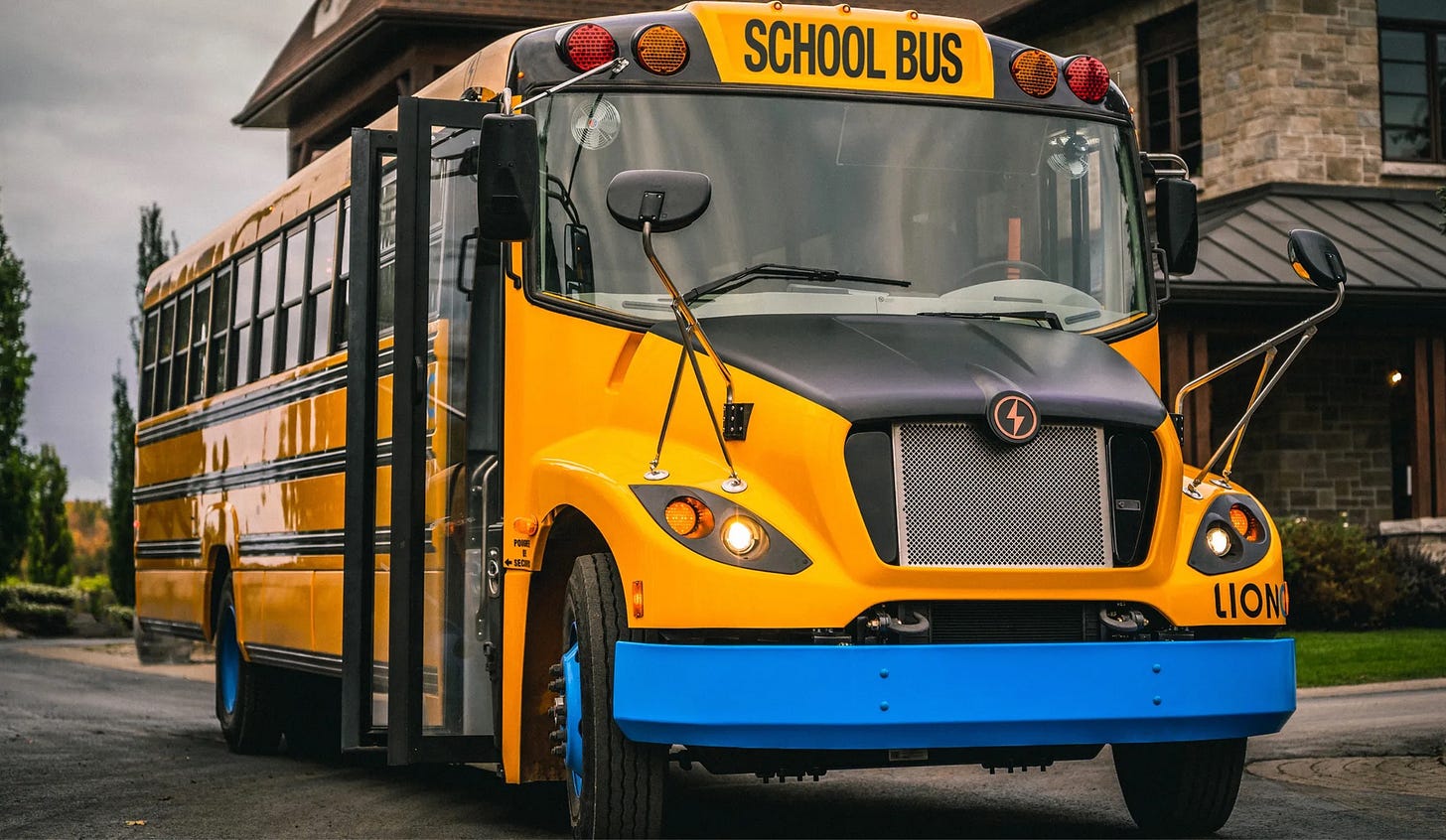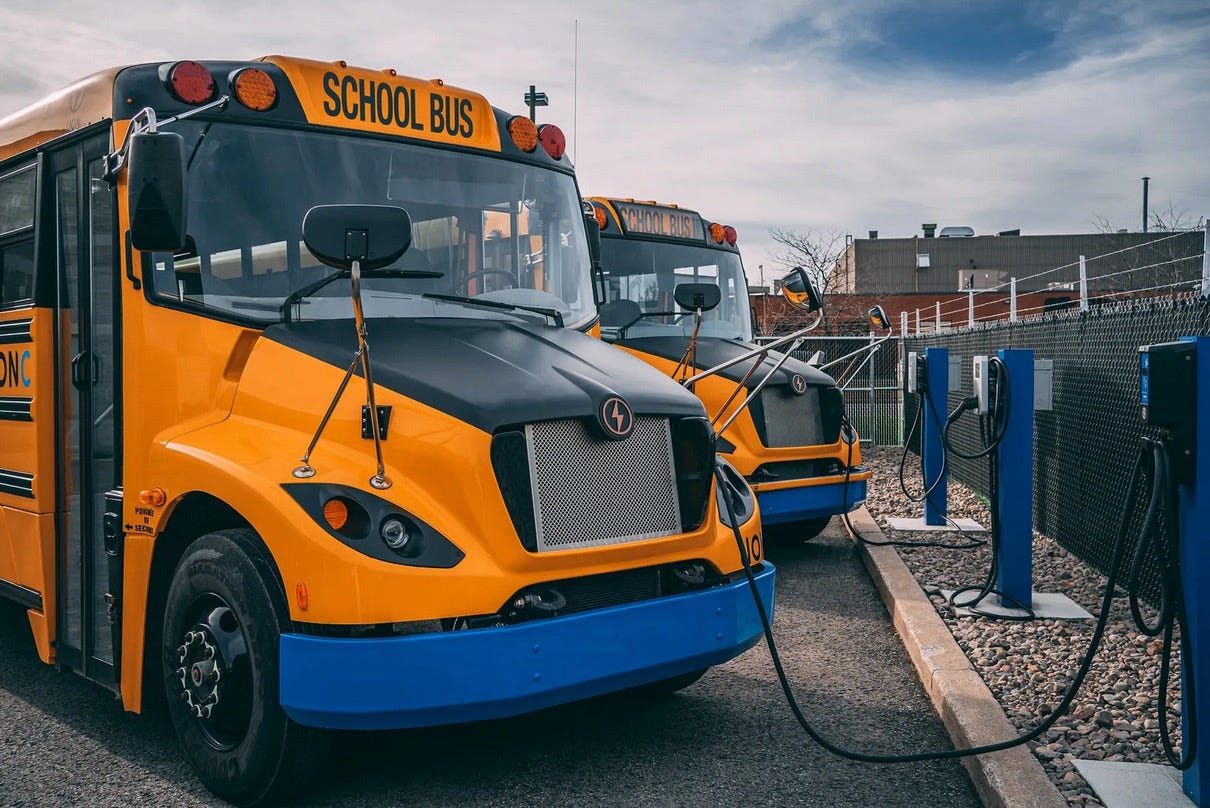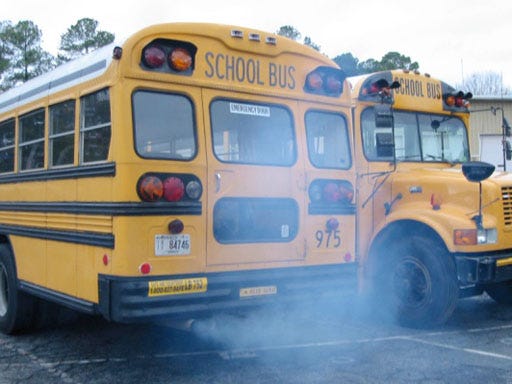Riding a school bus may be the most unhealthy part of a child’s day.
Diesel-powered school buses spew toxic fumes that can seriously harm a child’s health, and interfere with their learning, according to children’s health advocates.
Need-to-Know: Air pollution inside school buses 5-10 times worse
Pollution levels on diesel school buses often exceed surrounding areas by five to 10 times, according to U.S. research. Diesel exhaust includes very fine particles of carbon and a mixture of toxic gases, and is carcinogenic.
School boards need to shift to all-electric school bus fleets to protect the health of children and local communities they serve, say the Canadian Partnership for Children’s Health and Environment, a coalition of 34 organizations.
Children are far more sensitive to pollutants than adults. Children exposed to transportation-related air pollution have reduced lung function and higher levels of asthma, according to a 2022 study.
Need-to-Know: Air pollution is responsible for one in seven premature deaths
Other studies have found a startling array of health impacts on adults from fossil-fuel powered vehicles including respiratory and cardiovascular diseases, neurological impacts, cancers, diabetes, eczema and noise-related afflictions including insomnia, anxiety and depression.
In addition, air pollution is responsible for one in seven premature deaths worldwide.
Replacing noisy, polluting diesel school buses with quiet, clean-running electric models should be a “no brainer”.
Dr. Samantha Green, president-elect of the Canadian Association of Physicians for the Environment
Six Benefits of Electric School Buses
1. Better health and academic outcomes for children.
2. Cleaner air and quieter schools and neighbourhoods .
3. Provide a backup power source in emergencies.
(One school district hit hard by a hurricane last year plans to use its newly-electrified school bus fleet as mobile emergency batteries during future natural disasters.)
4. Lower operating costs
5. Cuts carbon pollution by 90 tons per diesel-bus replacement (based on 12-year operation).
6. Show children and teenagers that governments and school boards are taking action on the climate crisis.
Surveys show the vast majority of kids are worried about climate change, and very distressed by the lack of action by governments at all levels.
Since electric school buses are a “no-brainer” where the heck are they?
Canada
The vast majority of Canada’s 50,000 school buses use diesel fuel while ferrying roughly 2.2 million children to and from school. Less than 200 buses are currently electric.
United States
In the U.S. a mere 1,400 electric school buses are in use or on order, mostly in California. Over 20 million kids ride America’s 500,000 school buses. School bus fleets are normally operated by private contractors such as First Student, which operates 44,000 school buses in Canada and the U.S.
Lack of awareness of the dangers of air pollution and benefits of electric buses are two reasons there are so few electric school buses in service say transportation experts. The big reason is that they cost more to purchase and to set up the necessary charging infrastructure.
There are funding sources, but they do not cover the full cost. For example, the Government of Canada’s Zero Emission Transit Fund covers the cost difference between diesel and electric buses. This is part of a $1.5 billion commitment under the Zero Emission Transit Fund for more than 5,000 zero-emissions buses.
In October 2022, the U.S. Environmental Protection Agency’s (EPA) announced its Clean School Bus Rebate Program, which awarded over $900 million for more than 2,400 electric school buses to 389 school districts.
It’s a start but there is sure a long way to go.
Purchase prices will slowly come down and there are new financial models such as electric-bus-as-a-service. As-a-service businesses can take over some or all of the capital costs and operating responsibilities of the charging-equipment purchase and installation.

Given what we know about the health impacts of diesel exhaust on kids, and the risks posed by climate change, switching to an all-electric school bus fleet should be an obvious choice in every school district and at every board of education.
Until next time, be well.
Stephen
Update:
A reader has pointed out that diesel engines are cleaner today thanks to government emissions regulations. Buses belching black smoke are rare and indicate a very old model or using illegal fuel. That said, while modern diesel school buses may have invisible exhaust fumes, children riding them still have high exposure to fine particulate matter and diesel particulate matter.







Diesel particulate matter is particulate matter. And moder diesels do not emit those because they are captured by the DPF filters... which stands for "DIESEL PARTICULATE FILTER". You need to educate yourself on the subject before you start writing these articles.